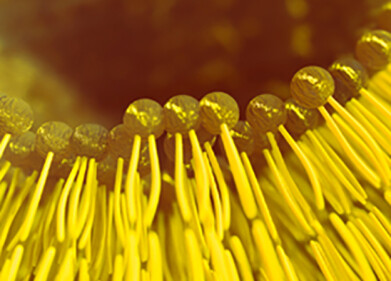Columns (LC)
Can Chromatography Help Catch Breast Cancer Earlier?
Feb 09 2017
The early detection of some types of cancer is critical to the prognosis of the patient and chances of survival. Breast cancer is one of the most commonly diagnosed cancers in women, and is the second biggest cause of cancer deaths in women. If breast cancer is diagnosed at the earliest stage then the five-year survival rate is over 90% — however, the survival rate is only 15% when the disease is diagnosed at an advanced stage.
Consequently, the search for an early detection method occupies many researchers the world over. The quest to — if not defeat, then to — reduce the impact of all types of cancer is high on the agenda of many research teams. A paper published in Rapid Communications in Mass Spectrometry reports on a study by Czech Republic researchers who looked at the lipids in cells as possible biomarkers for breast cancer.
BRAC and mammograms
Many researchers believe the development of breast cancer is linked to exposure to the female hormones oestrogen and progesterone — the incidence of breast cancer in males is significantly lower. The cause of breast cancer is associated with the hormonal responses to aging, lifestyle or diet — although individual cases could be due to exposure to environmental harms such as radiation.
There are several different types of breast cancer — mutations due to the BRCA1 and BRCA2 genes are two commonly discussed in the media — having different biological features and treatment routes. Mammograms are currently the most common way that healthcare practitioners screen for breast cancer. But, mammograms can sometimes miss signs and they expose the recipient to radiation that could be harmful. Hence the need for alternative screening tests — enter biomarkers.
Biomarkers point the way forward
Previous studies have highlighted a potential link between breast cancer and lipid metabolism — a link that could be used as an early screening tool. Increased production of fatty acids in cells has been associated with cancer, with increased concentrations of saturated fatty acids like palmitic and stearic acids being found in breast cancer cells.
The Czech Republic team used chromatography and mass spectrometry to identify and measure the lipids in healthy cells and breast cancer cells from nine different types of breast cancer. After extracting the lipids from the cells, they used hydrophilic interaction liquid chromatography / electrospray ionization mass spectrometry (HILIC/ESI-MS) to separate the lipids and measure the quantities of the various lipids. They then used gas chromatography mass spectrometry to determine the precise fatty acid make-up of the lipids. The choice of column to use in an HILIC analysis is discussed in the article, The use of High Performance Liquid Chromatography (HPLC) columns in Biomolecule analysis.
The team found over 120 different lipids in the cells they investigated. But crucially, they identified patterns that were specific to the cancer cells. Although it is early days, researchers could be on the way to a better early warning system for breast cancer.
Events
Jan 20 2025 Amsterdam, Netherlands
Feb 03 2025 Dubai, UAE
Feb 05 2025 Guangzhou, China
Mar 01 2025 Boston, MA, USA
Mar 04 2025 Berlin, Germany














